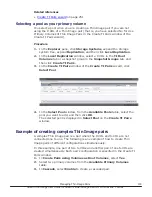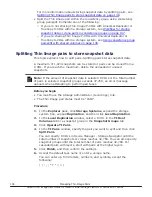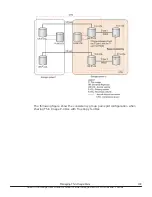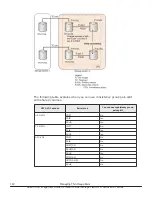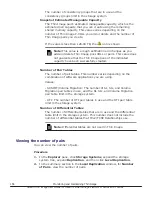
If a failure occurs, delete the unneeded snapshot data by restoring the
suspended pairs.
Restoring suspended Thin Image pairs
When pairs are suspended ("PSUE" status) after a failure occurs, they need
to be restored.
Note:
You can only restore one Thin Image pair at a time.
Procedure
1.
Delete the snapshot data by resynchronizing the pair.
2.
Complete one of the following:
• Overwrite the backup data to the P-VOL.
• Format the P-VOL.
For more information about overwriting backup data to the P-VOL or
formatting LDEVs, see the
Provisioning Guide
for your storage system.
Related tasks
•
Resynchronizing Thin Image pairs
on page 144
Thin Image pair resynchronization
Resynchronizing a Thin Image pair updates the S-VOL with the differential
data and deletes the replaced data, the data in the pool. Resynchronizing a
pair maintains the relationship between the P-VOL and S-VOLs.
The amount of time required for resynchronization depends on the following,
even if the pair resynchronization rate is 100 percent:
• The amount of capacity the pool is using.
• The number of pairs being resynchronized concurrently.
Pair resynchronization methods
You can forward or reverse resynchronize Thin Image pairs. A forward
resynchronization resynchronizes the S-VOL from the P-VOL. A reverse
resynchronization restores the P-VOL from the S-VOL.
Forward resynchronization
You can use the Normal Copy (Primary > Secondary) method to forward
resynchronize pairs.
This method performs a full forward resynchronization of data from the P-
VOL to the S-VOL. The differential data is copied to the S-VOL.
Managing Thin Image Pairs
143
Hitachi Thin Image User Guide for Hitachi Virtual Storage Platform G Series and F Series





